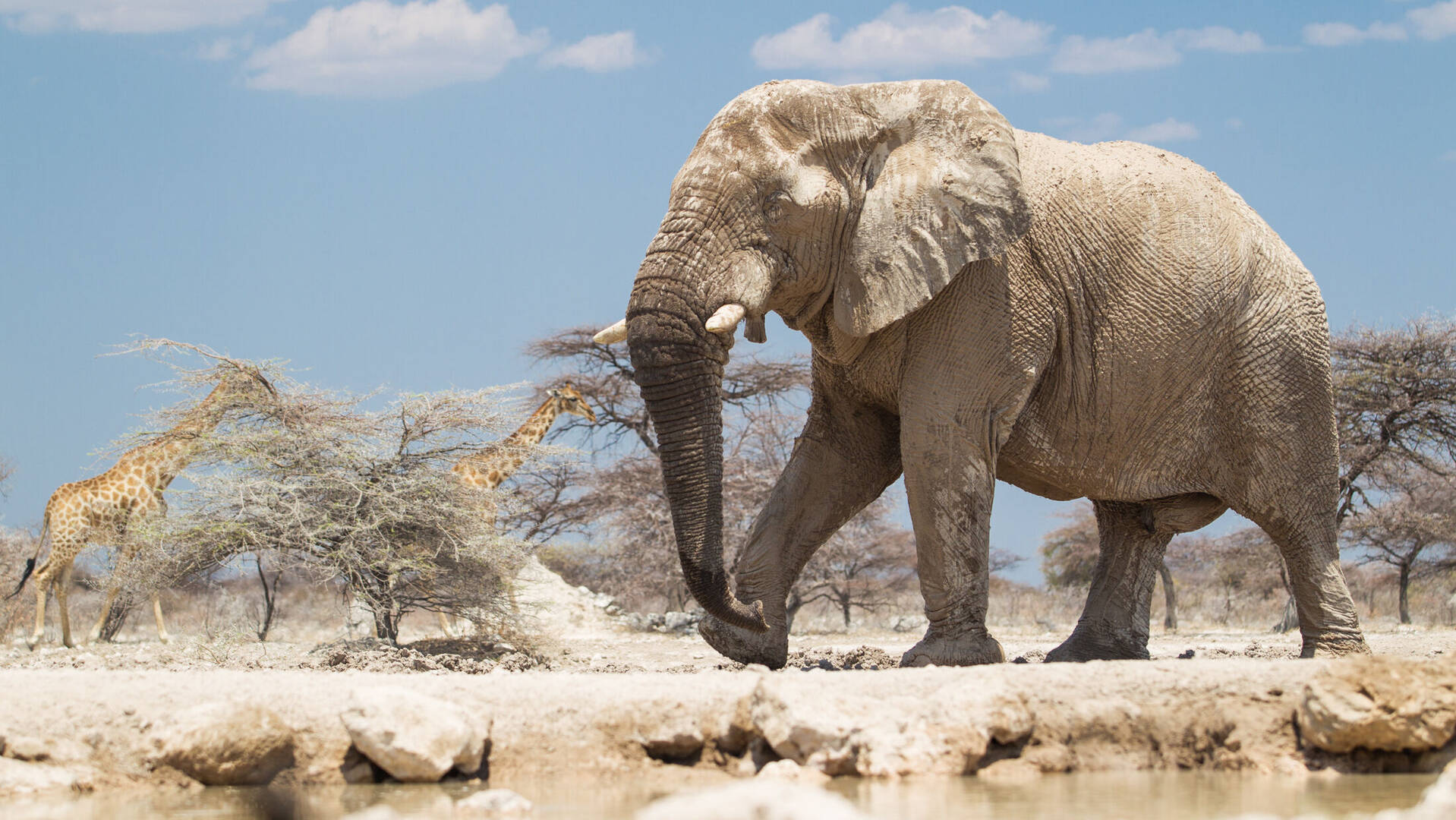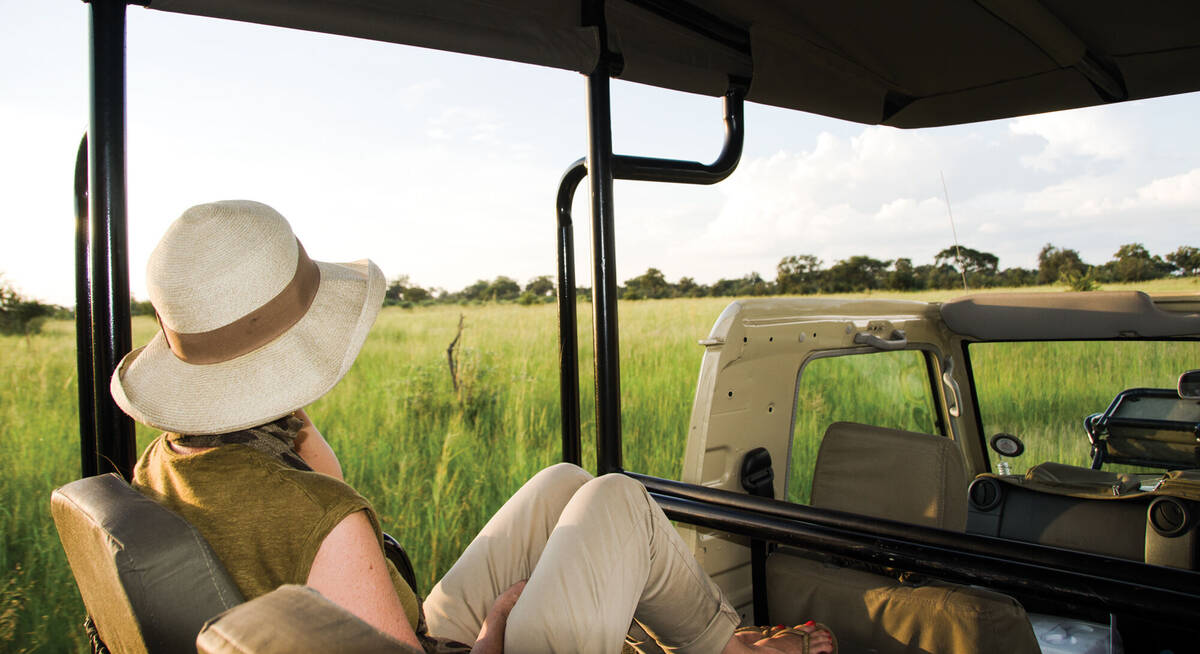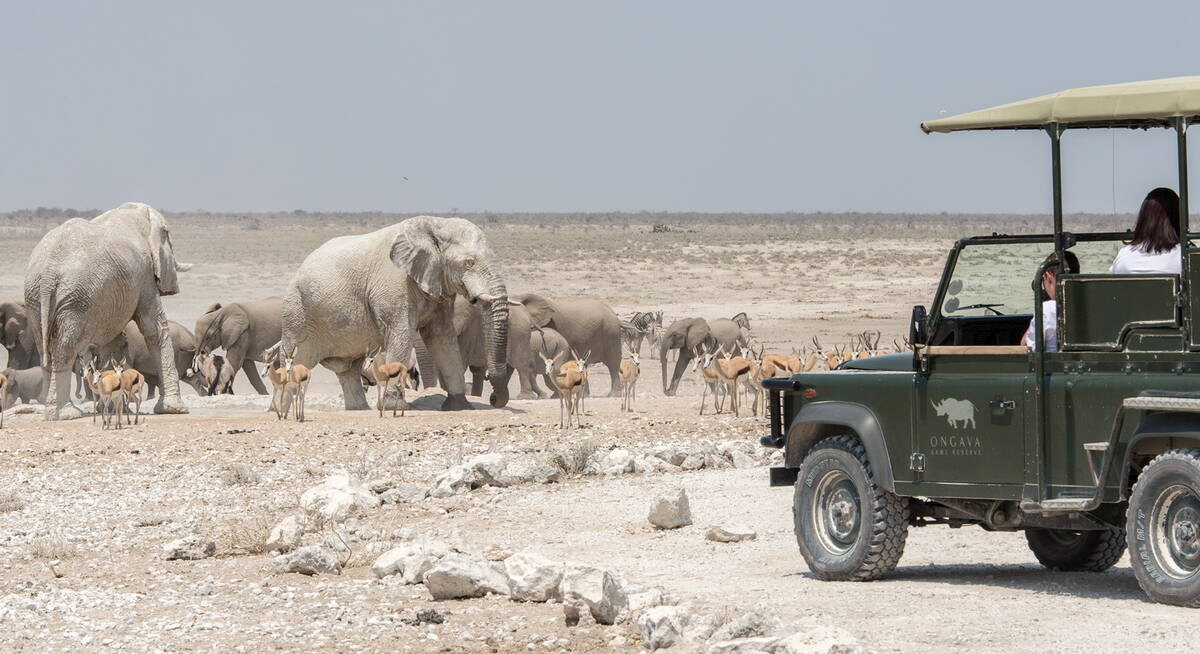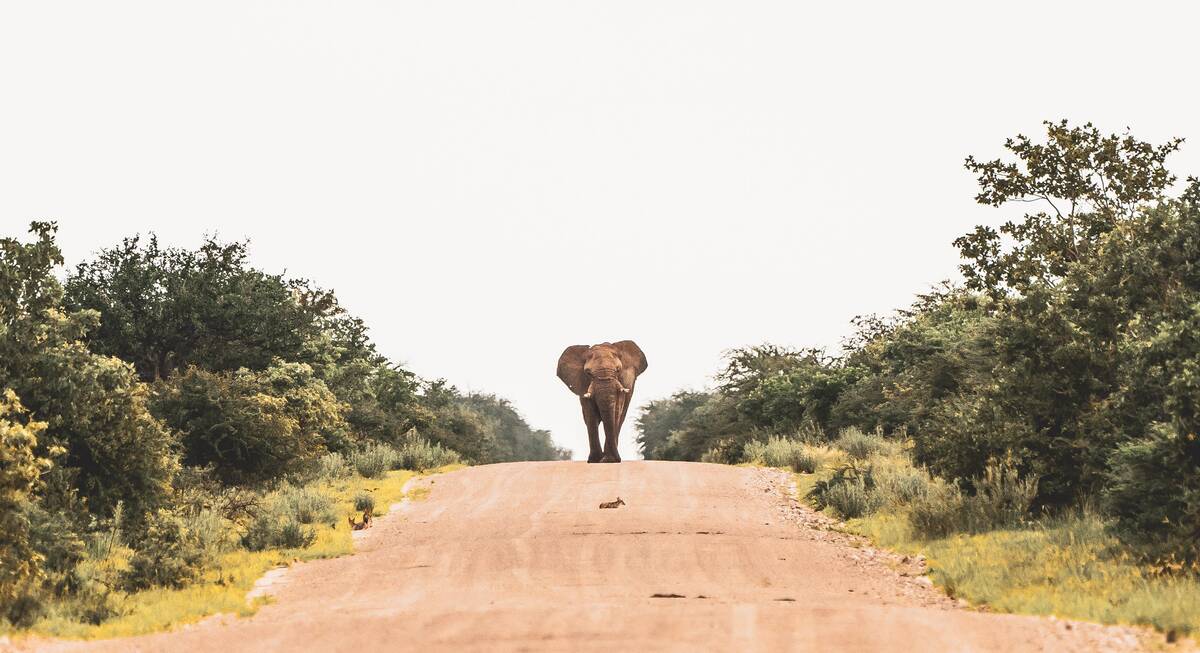This is what most travellers want to see when they come to Namibia - large herbivores...
...including the worlds largest land animal, the African elephant...
...huge buffalo...
...and imposing rhino.
Hippo are also frequently seen, either ashore...
...or in large rivers and lakes.
Zebra are widespread throughout most of Namibia...
...whilst the worlds tallest mammal, the Giraffe, can be spotted in the northern parts.
Common zebra
Equus burchelli Shoulder height 130cm. Weight 300–340kg.Also known as Burchell's or plains zebra, this attractive striped horse is common and widespread throughout most of East and southern Africa, where it is often seen in large herds alongside wildebeest. It is common in most conservation areas from northern South Africa, Namibia and Botswana all the way up to the southeast of Ethiopia. Southern races, including those in Namibia, have paler brownish 'shadow stripes' between the bold black stripes that are present in all races.
Hartmann's mountain zebra
Equus grevyi hartmannaeThe Hartmann's mountain zebra is confined to Namibia's western escarpment and the plains nearby. It is very closely related to the Cape mountain zebra which occurs in South Africa. Mountain zebra have a slightly lighter frame than the Burchell's, their underparts are not striped, the striping on their legs extends all the way to their hooves, and they have a dewlap which the Burchell's lack.
They occur from the conservation area around the Fish River Canyon to the Naukluft Mountains, and the Hartmann Valley in the Kaokoveld, and have been introduced on to several private reserves away from the escarpment area.
Warthog
Phacochoreus africanus Shoulder height 60–70cm. Weight up to 100kg.This widespread and often conspicuously abundant resident of the African savannah is grey in colour with a thin covering of hairs, wart-like bumps on its face, and rather large upward curving tusks. Africa's only diurnal swine, the warthog is often seen in family groups, trotting around with its tail raised stiffly (a diagnostic trait) and a determinedly nonchalant air.
They occur everywhere in Namibia apart from the far south and the western desert areas, although I have often seen them grazing, on bended knee, where the C36 cuts through the Namib-Naukluft National Park.
Bushpig
Potomochoerus larvatusBulkier, hairier and more brown, the bushpig is only known to occur in Namibia in the Caprivi Strip. It is very rarely seen due to its nocturnal habits and preference for dense vegetation.
Our top picks for holidays to Namibia
We'll always tailor-make your Town for you. Here are some of our favourites to inspire you.

Looking for inspiration on where to travel next?
Visit our trip chooser to explore your options and find inspiration for your perfect African adventure
Inspire me




















